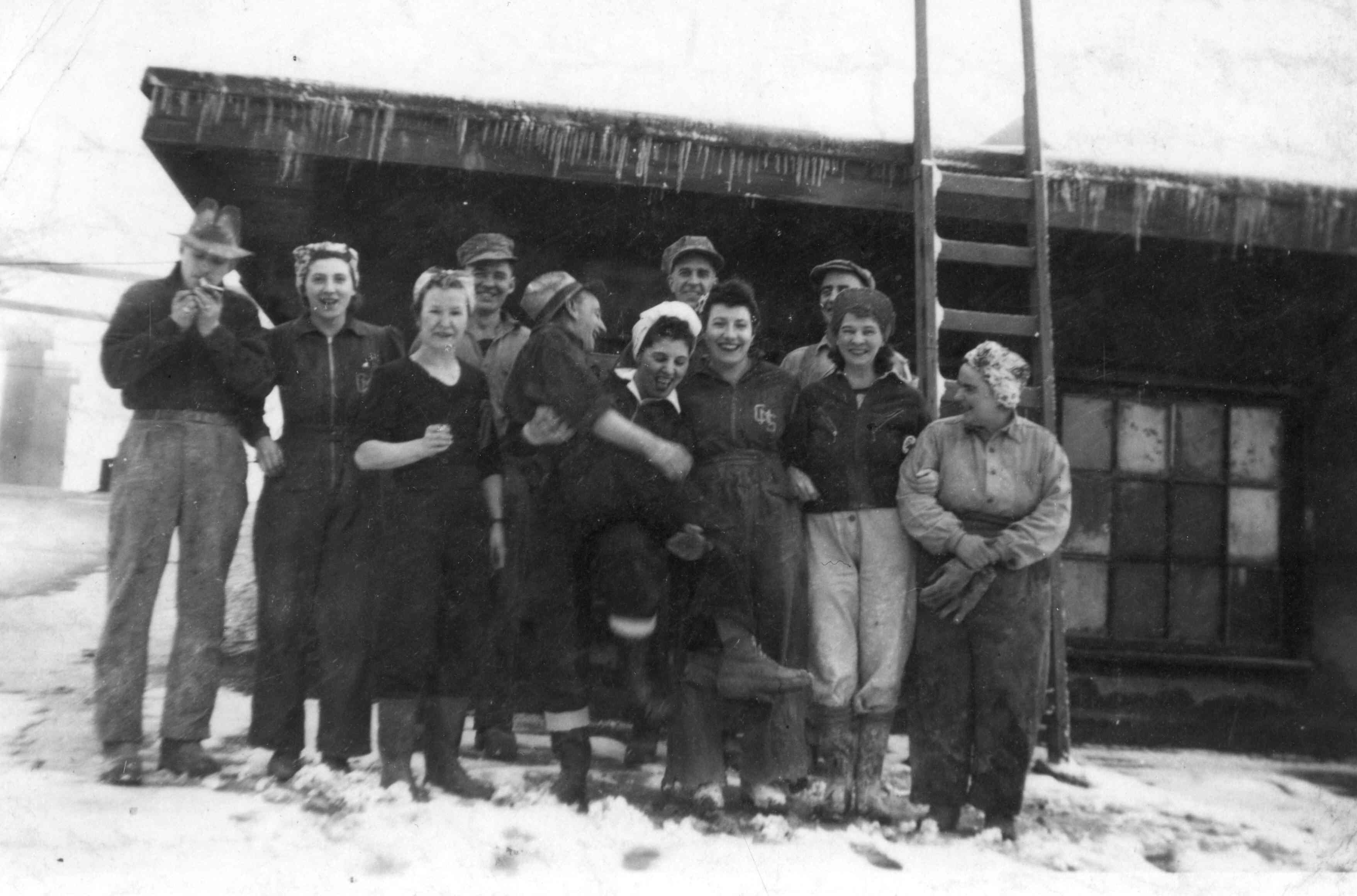We Can Do It: Teck Women Make History
Teck Trail Operations is proud to commemorate 125 years of continuous smelting with an eight-part series that explores the company’s significant role in the region and industry, from the gold rush to becoming one of the world’s largest fully integrated zinc and lead smelting and refining complexes. Since 1896, visionary leadership, generations of skilled employees, adaptation, and industry-leading technological advancements in mining and smelting have helped the company achieve long-term success. Please enjoy this series that celebrates our legacy as Champions of Innovation.
Dressed in coveralls, burlap aprons, rubber boots and leather mitts, women with their hair tied back in colourful scarves proudly entered the workforce during the Second World War. It was 1941, and over 2,000 women in the Greater Trail area were prepared to contribute to the local economy and the war effort while company men were deployed overseas.
When German troops swept across Europe in 1939, Canada rallied to support the Allied forces against Hitler. The British government quickly implemented a policy that ramped up the production of strategic materials. Teck Trail Operations, then the Consolidated Mining & Smelting Company of Canada, was contracted to supply much needed raw materials, playing a vital role in war efforts.
Men leaving their posts at the smelter to serve their country quickly resulted in a staffing shortage. About half the company’s workforce enlisted in the military, which triggered the call for women to enter the workforce and meet the plant’s escalating demands. Paid 80 percent of men’s wages, women diligently filled the positions, including those in clerical roles, the Assay Office, the Zinc Tank Rooms, and the Research department.
While local women worked at the smelter, others were also making history under the formation of Detachment No. 6, Canadian Women’s Training Corps. Donning blue uniforms partly made up from a surplus of navy blue World War I jackets, the women were taught small arms and musketry and practical hands-on skills such as first aid. Despite having no military significance beyond training within the local unit, the spirited group were ready to respond and meet demands, and their presence boosted morale in the community. In addition to taking on plant work and other home front jobs, women also joined the Canadian Armed Forces, serving at home and abroad in non-combatant roles.
During the production boom, the late Jessie Fennell (née Clayton) was working at Project 9, the code name for the highly classified enterprise in Trail tasked with producing essential ingredients for the Manhattan Project. Although the materials were never used in the US government’s atomic bombs, the work resulted in noted scientific breakthroughs. Inspired by her compelling story, her granddaughter Takaia Larsen captured her voice and those of many others in her Master’s thesis: Sowing the Seeds: Women, Work and Memory in Trail, BC During and After World War Two.
Larsen, a Selkirk College instructor, explores how the immediate need for women in the workforce would change the community’s attitude toward what women could accomplish.
“There really was deep societal change,” she says. “But it actually largely happened through influencing generations that came after the initial experience of women at work during the war.”
When the men came home from war in 1945, they returned to their jobs; the women who’d held their positions mostly went back to their traditional household roles. However, their experience had proven their abilities and instilled confidence. These influential women laid the groundwork for a shift in perspective that eventually mobilized change for women locally and across the country. In 2016, the Trail Legion Ladies Auxiliary, the City of Trail, and Teck Trail Operations unveiled a repurposed plaque at the Trail Memorial Centre that commemorates ‘the women’ in addition to the men who gave their lives in the cause of freedom during the world wars.
Teck Trail Operations has helped shape the Kootenay region both economically and culturally for over a century. Stay tuned for the next installment of Champions of Innovation, which will highlight Teck’s relationship with company employees.

























Comments